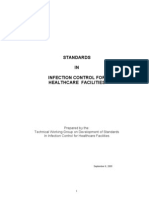Empowering Communities: The Essence of Community-Based Epidemic Prevention
The landscape of epidemic prevention is evolving, with a growing recognition of the indispensable role communities play in safeguarding public health. This article delves into the concept of community-based epidemic prevention, exploring its principles, impact, and the transformative potential it holds.
Foundations of Community-Based Prevention
At the heart of community-based epidemic prevention lies the idea of empowering communities to actively participate in safeguarding their health. This approach shifts the focus from top-down interventions to collaborative efforts where local residents, community leaders, and organizations collectively engage in preventive measures. It recognizes the unique strengths, knowledge, and dynamics within each community.
Education and Awareness as Catalysts
Education and awareness form the bedrock of community-based prevention strategies. Informing community members about the nature of infectious diseases, modes of transmission, and effective preventive measures equips them to make informed decisions. Community-led workshops, informational campaigns, and outreach initiatives foster a sense of shared responsibility and build a knowledgeable frontline against epidemics.
Local Leadership and Grassroots Initiatives
Effective community-based prevention relies on local leadership and grassroots initiatives. Community leaders, often intimately familiar with the needs and nuances of their neighborhoods, can spearhead initiatives tailored to the specific challenges their communities face. Grassroots organizations play a pivotal role in implementing targeted interventions, leveraging existing community networks.
Engaging Diverse Community Stakeholders
Community-based prevention is inclusive, engaging diverse stakeholders within the community. This includes residents, healthcare providers, educators, religious leaders, and local businesses. By fostering collaboration among these stakeholders, a comprehensive and well-coordinated response to potential epidemics can be developed, ensuring that no segment of the community is left untouched.
Building Resilient Social Networks
Resilient social networks are a key asset in epidemic prevention. Community-based initiatives strengthen social bonds, creating a supportive environment where individuals can rely on one another during crises. These networks facilitate the dissemination of information, resource-sharing, and mutual assistance, reinforcing the overall resilience of the community.
Tailoring Interventions to Local Contexts
Every community is unique, and effective prevention requires interventions tailored to local contexts. Community-based approaches take into account cultural practices, socioeconomic factors, and geographical considerations. Tailoring interventions ensures that preventive measures are culturally sensitive, accessible, and relevant to the specific needs of the community.
Surveillance and Early Warning Mechanisms
Communities are well-positioned to act as the first line of defense in surveillance and early warning. Establishing mechanisms for community-based surveillance involves training community members to recognize early signs of potential outbreaks. Rapid reporting and communication with health authorities enable swift responses, reducing the likelihood of widespread transmission.
Resource Mobilization and Community Empowerment
Community-based prevention involves not only utilizing external resources but also mobilizing internal capacities. Empowering communities to identify and leverage their own resources fosters a sense of ownership and sustainability. Whether it’s organizing community-led health clinics or establishing local response teams, the active involvement of community members enhances the overall impact of preventive efforts.
Challenges and the Path Forward
While community-based epidemic prevention holds immense promise, it is not without challenges. Limited resources, varying levels of community engagement, and the need for sustained commitment pose obstacles. Addressing these challenges requires ongoing collaboration, innovative solutions, and a commitment to strengthening the resilience of communities.
Conclusion: The Power of Community Agency
In conclusion, community-based epidemic prevention embodies the power of community agency in safeguarding public health. By placing communities at the forefront of prevention efforts, we tap into a wellspring of collective strength, resilience, and local knowledge. Empowered communities not only contribute to epidemic prevention but also lay the foundation for healthier and more resilient societies.
For more information on community-based epidemic prevention, visit Healthcare Systems.















